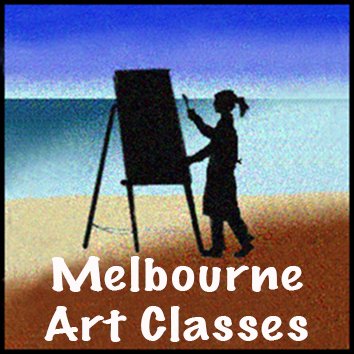Melbourne ADULT Art Classes
Typical format
REGULAR TERM ART CLASS FORMAT - A TYPICAL PRACTICAL SESSION FOR A REGULAR BEGINNER ENROLLED STUDENT
🎨 Drawing is practised at home and reviewed in practical classes, and an extensive supply of exercises is available every term for every level
🎨 Most students are working in class in good quality fast drying acrylic pigments (the option to work in watercolours and/or oils is there, however, because acrylic is the most flexible, fast drying & practical for fast progress to start with, most begin learning with this. )
You decide and your class time will be your choice of medium.
(we recommend Chroma A2 student acrylics as they are at least a goo price and lightfast (most student pigments are not the latter) and have good primary and other hues for your basic 6-8 starting pigments, (these are heavy-body pigments in tubes, so when you make your own secondaries and tertiaries, you can use little beading screw jars to store these mixes.)
OR
For those who are ready to invest in artist quality, the Atelier Free Flow range is very versatile and of great artist quality.(if you buy the basic minimum 6 pigments we recommend, you can get 20+ little squeeze bottles from Officeworks and make some of every other hue yourself.
(Don’t stress, we have a published Colour Harmony and Mixing workbook, so you can mix all your secondaries and tertiaries at the same time as learning the complementary partners of each with your own pigments). You will be a colour master in no time.
🎨 Visit this page to see materials lists
THE STILL LIFE CHALLENGE: (find a few examples from students on this page) View some references here
You can start your painting journey any way you would like, but most students take up the fast-track ‘6 still life challenge’ as they are often in a hurry to cover all foundation subjects quickly and get on with their own individual goals with some broad skills up their sleeves. You will see students of more experience working on landscapes, figures, abstracts later on etc.
🎨 - Select your favourite colour, under-paint 3-6 small canvases (25x30cm or 30x40cm) in a light to mid-tone of this colour (you can first learn different harmonious schemes to apply with this one favourite colour and later you can build on this.)
🎨 - Create your Compositional Planning page for each one, using a reference (taken yourself at home or a compilation of sourced references, the studios have some to offer as well), the idea being to design a new composition, rather than simply copy a photo or someone else’s design. NB. A Consistent light source is a priority when utilising various references in one study.
🎨 - Aim for inclusion of diverse subjects spread throughout the mini-series, such as fabric folds, glass objects, chrome objects, wood, floral, fruit, game, stone etc, this will allow for rapid development of paint application techniques, drawing practice, working with light and shade, colour harmony and composition & design. 3 - 6 unique colour harmonies for your chosen colour will be developed over this series, giving students more control over the elements of colour and value. Maybe you want to create still life studies of mechanical parts or makeup on a satin cloth? Doesn’t matter, it is not all about fruit and flowers, or pheasant and fowl!!
It is not the goal to copy a photograph, or another’s artwork, however, it is very helpful to have references to help you draw and arrange your own composition, working through all of the compositional considerations outlined in the Compositional Planning Pages that you will have prepared.
**As an art student develops all foundation areas of learning, similar processes are used to work in any number of diverse genres. Melbourne Art Classes online studio index is a constant source of independent learning materials in all modules.







